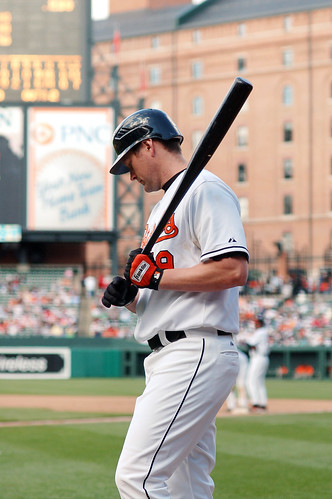Daniel Moroz over at Camden Crazies (nee Frost King Baseball for the old school types) brought to light an incidence of plagiarism and copyright infringement on a blog site. Jordan ran Orioles Prospects, a site that specialized itself as a hub for Orioles prospects with him self-identified as an individual qualified to provide top notch insight on players in the Orioles minor league system. To be brief, it was clearly evidenced that Jordan was copying and pasting (sometimes changing a word or juggling parts in a sentence) thoughts and ideas originally printed from Baseball America, PG Crosschecker, and Keith Law.
Now, the first inclination when a story like this breaks is to tar and feather the person who broke ethical and legal rules about use of content. To some extent, I think that is fair. Jordan should be held accountable for his actions. He is 15 years old and probably lacks some capacity to understand the ramifications of his actions and is still of an age where concepts of right and wrong can be muddled. These are reasons, not excuses. For this, he needs correction, which I hope is being accomplished in the aftermath of Moroz' piece. I also hope he takes to it as easily to it as he did after the piece was published as opposed to his actions before. Having to face up to defrauding people is difficult and most would try to get out of it just like he tried to do.
That said, I think this is also a time for many of us in this community to look at what we do. One common link I found in comments and in conversing with others is that for a while many of us were rolling our eyes at Jordan's content. I, myself, was brought attention to his work roughly around the Haiti tragedy although I had nonchalantly put him on my Twitter follow list. After the earthquake, Jordan was trying to increase follows on Twitter to help with selling his guide as well as donate money to Haiti by promising a dollar for every new follow, which is probably a somewhat ethically shady way to help people. I decided to take a look at his site and found it to be highly questionable. I could tell from the sentence structure and turns of phrase that it was ripped from other content. I had better things to do at the time and decided to just remove him from my follow list.
Looking back on that, was that enough? I think as a community we need to be more honest with each other. This does not mean an aggressive hunt for any offending fraud offense, like Jordan's. I think what it means is that when there is a member in our group who is obviously posting shady material, we need to engage instead of eye rolling. We need to accept that other bloggers challenging our information is good for our community, ourselves, and our audience. Personally, I could sit in my own world here and just go on and on about my own studies, but I find it much more rewarding when there is a conversation about posts published between Camden Crazies, Dempsey's Army, and us here at Camden Depot.
As much as this was about some teenager pretending to have the experience and know how that takes others at least a decade to acquire, it is also about the community of knowledgeable individuals who let this continue. I think it is also about how maybe we have the chance to take someone who is eager enough to try to cheat his way into the conversation and somehow make him useful to the dialogue. I guess it might be a situation where Jordan grows from this or learns to defraud people in a more competent manner; and how we, as a community, respond to it or to others who find themselves on that path.



















